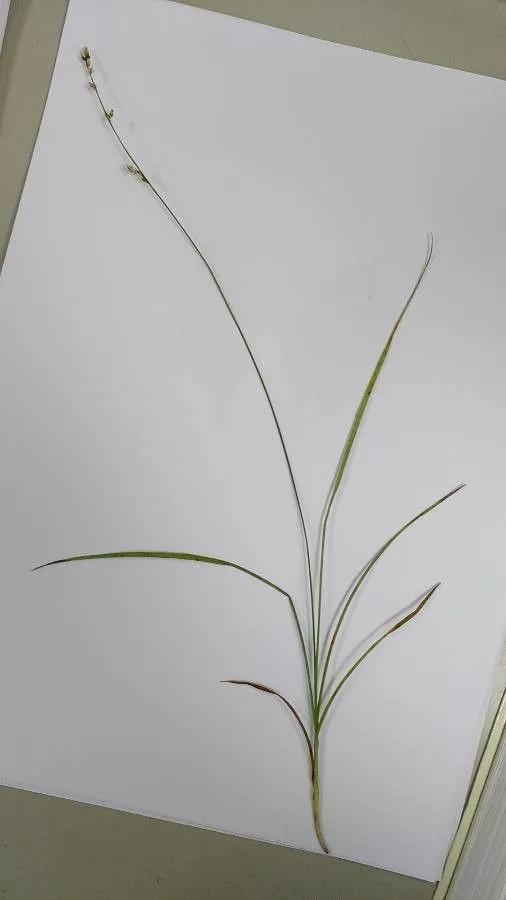
Author: Stokes
Bibliography: W.Withering, Bot. Arr. Brit. Pl. ed. 2, 2: 1035 (1787)
Year: 1787
Status: accepted
Rank: species
Genus: Carex
Vegetable: False
Observations: Macaronesia, Europe, Medit. to C. Asia
Grey sedge, scientifically known as Carex divulsa, is a noteworthy species of the perennial plant family Cyperaceae. Described by Stokes in the 18th century and documented in W. Withering’s esteemed “Botanical Arrangement of British Plants”, the grey sedge has a significant historical footprint in the study of botany.
This resilient sedge is native to a wide geographic range that includes Macaronesia, parts of Europe, the Mediterranean region, and extends as far as Central Asia. Carex divulsa thrives in these diverse climates and landscapes, showcasing its adaptability and ecological importance across various habitats.
Renowned for its understated elegance, grey sedge exhibits long, slender leaves with a distinctive grey-green hue. The plant’s spikes, often displaying a slightly drooping appearance, lend a subtle grace to its overall form. This sedge is typically found in moist, well-drained soils, flourishing in both sunlit and partially shaded environments.
From an ecological perspective, grey sedge plays a critical role in its habitats, contributing to the stability and health of wetland ecosystems. It also provides shelter and food for various species of wildlife, adding to the biodiversity and robustness of the areas it inhabits.
In cultivation, grey sedge is appreciated for its low maintenance requirements and resilience, making it a suitable addition to naturalistic and sustainable garden designs. Its ability to withstand different growing conditions while maintaining aesthetic appeal makes it a versatile choice for landscape architects and gardeners alike.
Overall, Carex divulsa remains an enduring subject of botanical interest, continuing to be studied and celebrated for its ecological contributions and enduring beauty.
Eng: grassland sedge, grey sedge, separated sedge
Dan: mellembrudt star
Deu: unterbrochenährige segge
Nld: groene bermzegge, ijle bermzegge, groene bermzegge subsp. divulsa
Fra: laîche écartée, carex à épis séparés, laiche à épis séparés, laîche à utricules divergents
Swe: långstarr
Cym: hesg llwyd, hesgen lwyd, hesgen lwydlas
En: Grey sedge, Grassland sedge, Separated sedge
Da: Mellembrudt star
Nl: Groene bermzegge, IJle bermzegge, Groene bermzegge subsp. divulsa
Fr: Laîche écartée, Carex à épis séparés, Laiche à épis séparés, Laîche à utricules divergents, Laîche à épis séparés, Laiche à utricules divergents, Laiche écartée
De: Unterbrochenährige Segge, Lockerährige Segge
It: Carice separata
Sv: Långstarr
Cy: Hesg Llwyd, Hesgen Lwyd, Hesgen Lwydlas
Taken Sep 11, 2022 by Trap Hers (cc-by-sa)
Taken Sep 25, 2021 by Trap Hers (cc-by-sa)
Taken Apr 9, 2019 by Brunello Pierini (cc-by-sa)
Taken Sep 11, 2022 by Trap Hers (cc-by-sa)
Taken Jun 6, 2021 by Hans Kraak (cc-by-sa)
Taken Sep 29, 2020 by Kathryn Klinger (cc-by-sa)
Taken Jul 18, 2020 by Γιώργος (cc-by-sa)
Taken Aug 25, 2022 by corine feeny (cc-by-sa)
Taken Oct 22, 2022 by Loup Garou (cc-by-sa)
Taken May 1, 2019 by Sabine Hähnlein (cc-by-sa)
Taken Jul 9, 2022 by Marek Durajczyk (cc-by-sa)
Taken Sep 25, 2021 by Trap Hers (cc-by-sa)
Taken Sep 25, 2021 by Trap Hers (cc-by-sa)
Taken Apr 22, 2022 by j B (cc-by-sa)
Taken Oct 7, 2021 by Loïc Tulasne (cc-by-sa)
Taken Aug 25, 2022 by corine feeny (cc-by-sa)
Taken May 14, 2020 by Creyaufmüller Wolfgang (cc-by-sa)
Taken Jun 5, 2015 by Tela Botanica − Liliane ROUBAUDI (cc-by-sa)
Taken May 27, 2015 by Tela Botanica − Yoan MARTIN (cc-by-sa)
Taken May 27, 2015 by Tela Botanica − Yoan MARTIN (cc-by-sa)
Taken Jun 2, 2021 by Llandrich anna (cc-by-sa)
Taken May 15, 2021 by Marithé (cc-by-sa)
Taken May 27, 2015 by Tela Botanica − Yoan MARTIN (cc-by-sa)
Taken Jan 1, 1800 by Tela Botanica − Mathieu SINET (cc-by-sa)
Taken May 31, 2012 by Tela Botanica − Liliane Roubaudi (cc-by-sa)
Taken Apr 17, 2014 by Tela Botanica − Dominique REMAUD (cc-by-sa)
Taken May 22, 2011 by Tela Botanica − Jean-Louis CHEYPE (cc-by-sa)
Taken May 27, 2015 by Tela Botanica − Yoan MARTIN (cc-by-sa)
© copyright of the Board of Trustees of the Royal Botanic Gardens, Kew.
Growth habit: Graminoid
Ph maximum: 7.0
Ph minimum: 6.5
Light: 6
Atmospheric humidity: 5
Bloom months: [‘apr’, ‘may’, ‘jun’]
Soil nutriments: 6
Family: Myrtaceae Author: (F.Muell.) K.D.Hill & L.A.S.Johnson Bibliography: Telopea 6: 402 (1995) Year: 1995 Status:…
Family: Rubiaceae Author: Pierre ex A.Froehner Bibliography: Notizbl. Bot. Gart. Berlin-Dahlem 1: 237 (1897) Year:…
Family: Sapindaceae Author: Koidz. Bibliography: J. Coll. Sci. Imp. Univ. Tokyo 32(1): 38 (1911) Year:…
Family: Asteraceae Author: A.Gray Bibliography: Pacif. Railr. Rep.: 107 (1857) Year: 1857 Status: accepted Rank:…
Family: Fabaceae Author: Medik. Bibliography: Vorles. Churpfälz. Phys.-Ökon. Ges. 2: 398 (1787) Year: 1787 Status:…
Family: Aspleniaceae Author: (Cav.) Alston Bibliography: Bull. Misc. Inform. Kew 1932: 309 (1932) Year: 1932…